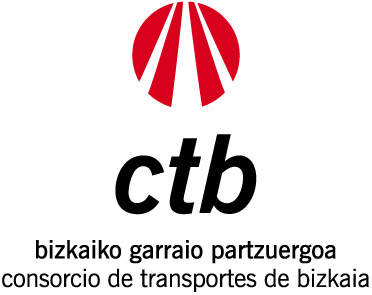red-hot iron
- Tailerra
- es hierro candente
- eu burdina gori
- fr fer porté au rouge
red-hot iron
Ez dago emaitzarik
Bilatutako terminoa ez dago hiztegian.
- ^ "Love for Love by William Congreve: Scene XV". www.online-literature.com. Retrieved 2021-10-23.
- ^ "Flip Cocktail (generic Recipe)". www.diffordsguide.com. Retrieved 2025-04-05.
- ^ Jerry Thomas, How to Mix Drinks (New York: Dick and Fitzgerald, 1862), 60.
- ^ Bailey, N. (1763). An Universal Etymological English Dictionary. Lincoln Financial Foundation Collection. London : Printed for T. Osborne [and 27 others]. p. 348.
- ^ a b c d Bickerdyke, John (1889). The Curiosities of Ale & Beer: An Entertaining History: Illustrated with over Fifty Quaint Cuts. London: Swan Sonnenschein & Co. pp. 388, 389.
- ^ a b c d Curtis, Wayne (2007). And a Bottle of Rum: A history of the new world in ten cocktails. Broadway Books. p. 74. ISBN 978-0307338624.
- ^ a b c Kitchiner, William (1822). The Cook's Oracle; containing receipts for plain cookery on the most economical plan for private families; also the art of composing the most simple, and most highly finished broths, gravies, soups, sauces, store sauces, and flavouring essences: The Quality of each Article is accurately stated by weight and measure; The whole being the result of actual experiments instituted in the kitchen of a physician. London. pp. 384, 385.
- ^ Stowe, Harriet Beecher (1869). Oldtown Folks. Boston: Fields, Osgood, & Co. Publishers. p. 481.
- ^ Stowe, Harriet Beecher (1869). Oldtown Folks. Boston: Fields, Osgood, & Co. Publishers. p. 483.
- ^ Stowe, Harriet Beecher (1869). Oldtown Folks. Boston: Fields, Osgood, & Co. p. 484.
- ^ Difford, Simon. "Flip cocktails". www.diffordsguide.com. Retrieved 2022-09-12.
- ^ Simmons, E. A. (1874). The American Bar-Tender; or The Art and Mystery of Mixing Drinks, Together With Observations on The Qualities of Wines, Liquors, and Cigars, to Which is Appended Several Hundred Toasts, Patriotic, Firemen's, Political, Lovers', Sporting, Etc. New York: Manhattan Publishing Company. p. 8.
Wikipediako bilaketara joan
SARRERA DESBERDINA:
Flip (cocktail)
A flip is a class of mixed drink. According to the Oxford English Dictionary, the term was first used in 1695 to describe a mixture of beer, rum, and sugar, heated with a red-hot iron.[1] The drink has evolved over time: egg was added, the sugar proportion increased, beer was removed, and it ceased to be served hot.[2]
The first bar guide to feature a flip was Jerry Thomas' 1862 How to Mix Drinks; or, The Bon-Vivant's Companion. In this work, Thomas declared that "the essential in flips of all sorts is to produce the smoothness by repeated pouring back and forward between two vessels and beating up the eggs well in the first instance the sweetening and spices according to taste."[3]
Over time, U.S. bar guides clarified the difference between eggnog and a flip. Eggnog contains a spirit, egg, cream, sugar, and spice, while a flip contains the same ingredients, but without cream.
The flip, from which the modern cocktail evolved, first originated 17th century. It originated in colonial America and was described as "a sort of Sailor's Drink".[4] It was very popular in both English and American taverns until the 19th century.[5][6] There were many variations, as each tavern had its own recipe. It was principally a mulled ale, with the addition of rum or brandy, sugar, spices—almost always grated nutmeg—and fresh eggs.[6][7] Some notable variations existed, such as the Sailor's Flip, which had no ale, or the Egg-Hot, which had no spirits.[5]
The drink was warmed and thus mulled by first placing the beer in a vessel near a fire. Once near boiling, the hot ale was transferred to a jug and combined with the eggs and other ingredients. Another jug was used to pour the liquid back and forth until it became smooth and creamy.[5][7] Finally, the drink was served in a cup or tankard and finished using a dedicated iron fireplace poker called a flipdog, hottle, or toddy rod. The rod would be heated by the fire until red-hot and then plunged into the cup of flip. The hot iron further mulled and frothed the drink, imparting a slightly bitter, burned taste.[6]
A loggerhead was originally used as the hot-rod before the purpose-built flipdog or toddy rod evolved from it. It was a narrow piece of iron about three feet long with a slightly bulbous head about the size of a small onion, used for heating tar or pitch to make it pliable.[6]
Flip is mentioned in Charles Dickens's 1864 book Our Mutual Friend when describing the Six Jolly Fellowship Porters tavern.[5]
The drink is central to an annual winter woodchopping event in Harriet Beecher-Stowe's 1869 novel Oldtown Folks, which illustrates New England culture, specifically Massachusetts, around 1820. A minor lumberjack character, "Old Heber Atwood," sips from a mug of flip,[8] and the Deacon sips from a tumbler.[9] The flip is served to all the townspeople, alongside cake and cheese.[10]
A recipe of the old drink, as written in The Cook's Oracle (1822):[7]
To make a quart of Flip:— Put the Ale on the fire to warm, — and beat up three or four Eggs with four ounces of moist Sugar, a teaspoonful of grated Nutmeg or Ginger, and a quartern of good old Rum or Brandy.
When the Ale is near to boil, put it into one pitcher, and the Rum and Eggs, into another;— turn it from one pitcher to another till it is as smooth as Cream.
The first account of a cold flip was in 1874 in E.A. Simmons's book The American Bar-Tender; or, The Art and Mystery of Mixing Drinks, followed by Jerry Thomas's guide in 1887.[11][12]
The following flip recipes appear in Jerry Thomas 1887.






